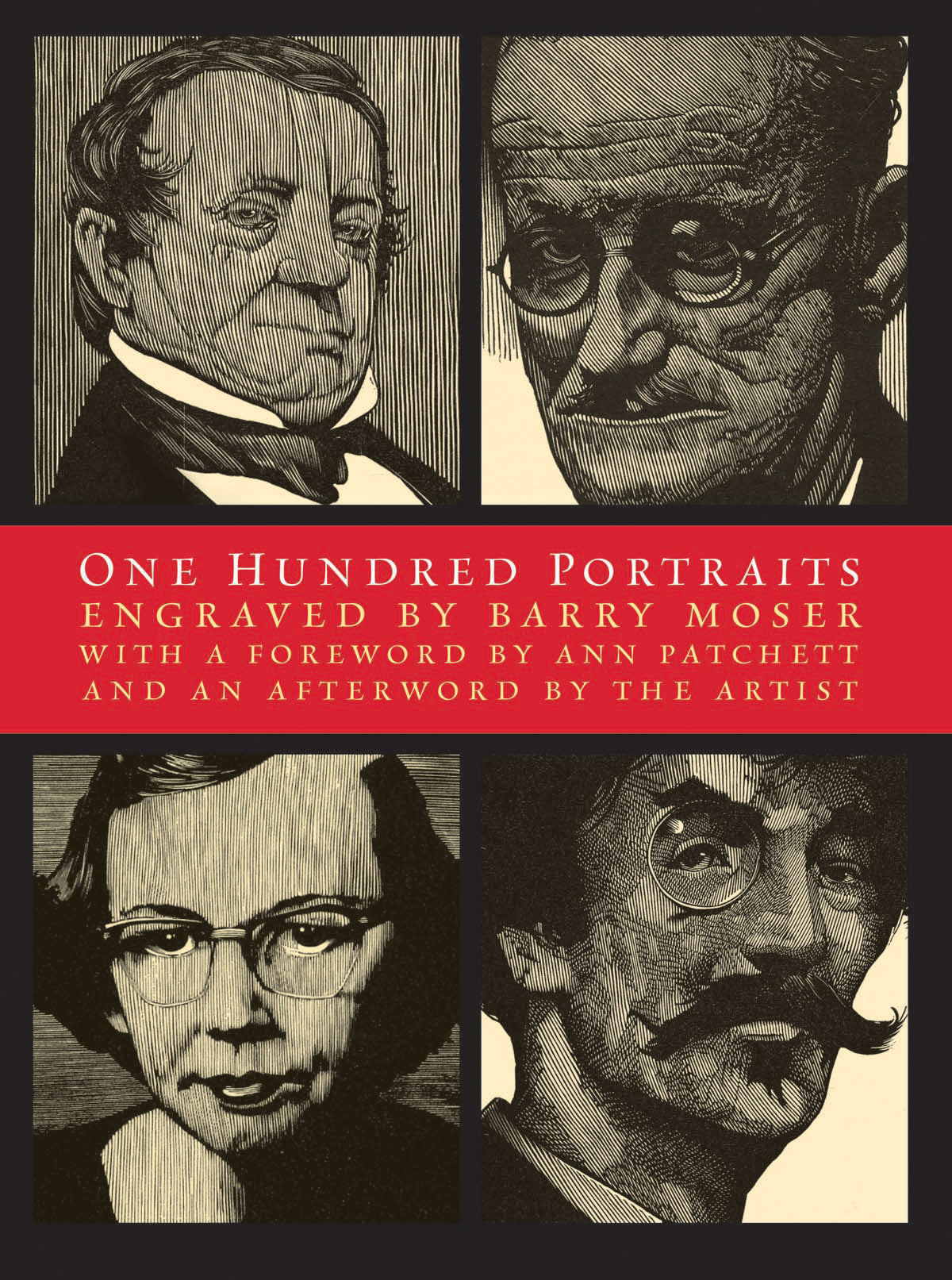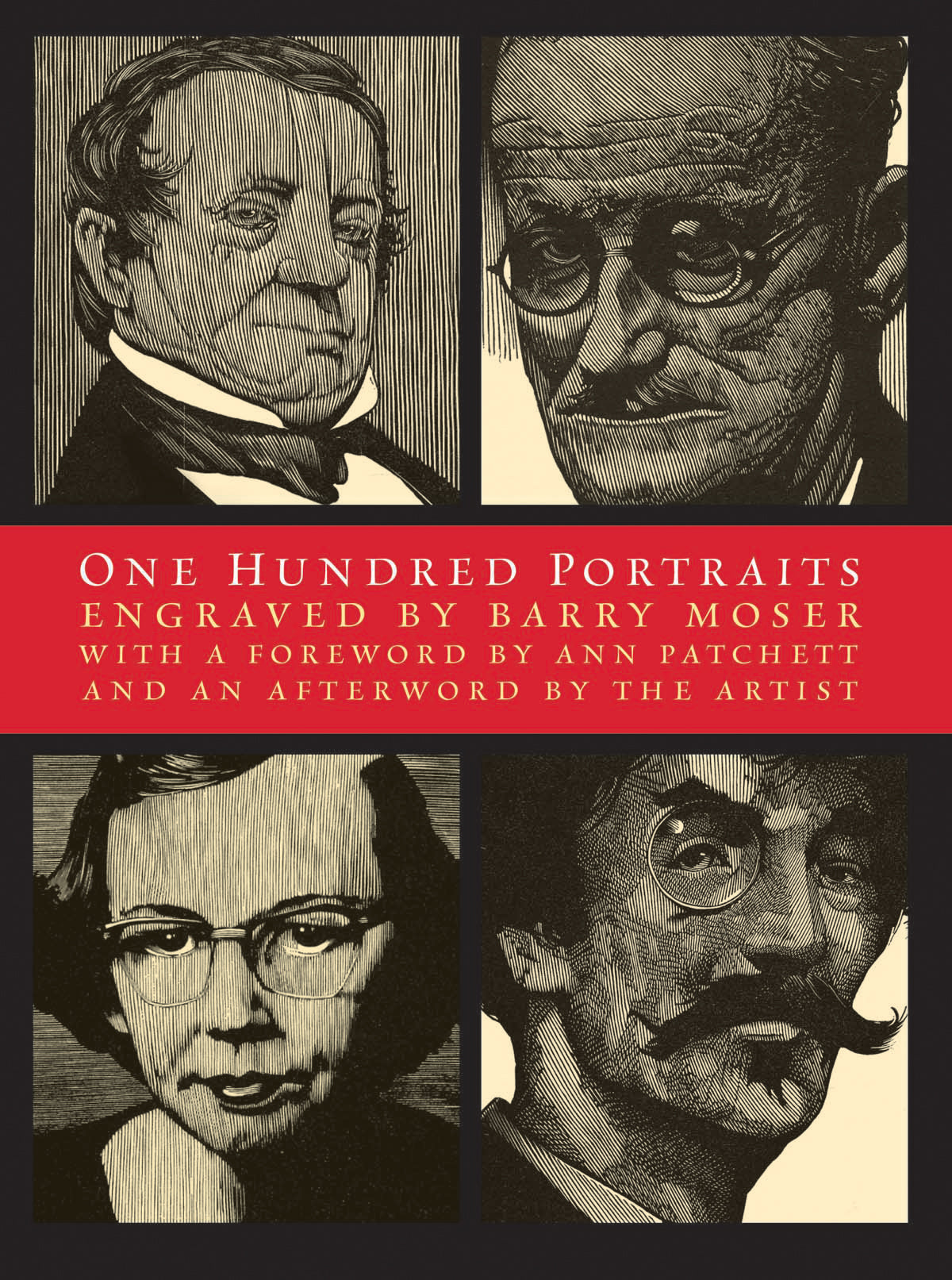
Portraits have long been a staple of Moser's oeuvre, beginning with his first book, The Red Rag, published by Castalia Press in 1970, which included a frontispiece portrait of the American painter (and author of The Red Rag), James Abbott McNeill Whistler. Nearly thirty years later he published his edition of the King James Bible, in which over half of the images were portraits. In this gathering are many of Moser's old portraits and more than fifty new ones created especially for this collection, including Charles Dickens, Daniel Webster, Stephen Crane, Dante Alighieri, Frédéric Chopin, Nelson Algren, Jean Cocteau, Edgar Allan Poe, Mark Twain, Martin Luther King, Abraham Lincoln, Ulysses S. Grant, Rembrandt van Rijn, Ben Shahn, Jim Harrison, Flannery O'Connor, William Shakespeare, Jane Austen, Walt Whitman, William Blake, Eric Carle, Kaye Gibbons, Virginia Hamilton, Nancy Willard, Patricia MacLachlan, Jack Coughlin, Jane Yolen, Joyce Carol Oates, and many others.
Ann Patchett, the recipient of the 2002 Pen Faulkner Award and Great Britain's prestigious Orange Award, contributes a splendid essay about Moser's portraits and the subject of portraiture in general. Moser has also penned a note about portraits that appears as an afterword.
Limited Edition: clothbound and comes with a slipcase. Please note, the copies available are NOT signed.
Perhaps the finest printmaker at work today, Mr. Moser has over the past 40 years captured countless famous countenances. 'One Hundred Portraits' collects the best. —The Wall Street Journal
Long interested in the character of creators, be they writers, artists, or composers, Moser once told an interviewer, 'The human face is almost as individual as a fingerprint. It fascinates me to no end.' . . . Moser's new book One Hundred Portraits (Godine) gathers a cast of characters through the ages, with an emphasis on British and American notables. Moser, who lives in Western Massachusetts, works with darkness, light, and lines to achieve faces that carry a sense of life's burdens and beauties as his subjects lived them. Ann Patchett writes in the foreword that she welcomes Moser's portraits of novelists as an opportunity to learn more about the souls that animate their works. —Jan Gardner, The Boston Globe
The portrait is, in my way of thinking, akin to a crystal goblet. I merely shape it and offer it to you. You fill it with what you know of that person, or of that person's work." Renowned for having illustrated over 200 books for children and adults, Moser, a member of the National Academy of Design, created a number of new engravings for this collection of portraits. Represented are poets (Keats, Wordsworth, Plath), authors (Mann, Twain, Carroll, Chekhov), composers (Handel, Wagner, Sibelius), activists (Douglass, Truth, King), and artists (Carle, Homer, van Rijn), as well as Moser's immediate family. In the brief afterword, he discusses the sources for his portraits, including subjects of whom no accurate depictions exist, like Chaucer. In those cases Moser utilized death masks , ancient photographs, and even busts. Printed on heavy matte paper, with spare titles including name, dates of birth and death, and occupation, One Hundred Portraits is a pleasure to study. The heavily detailed engravings result in portraits of very expressive faces, and giving readers, according to Ann Patchett, "the chance to visit the people we were sure of and learn something more. —Publishers Weekly
Even if you are not familiar with Barry Moser's name, you've likely seen his distinctive engravings while reading a classic novel or leafing through a children's book. His illustrated edition of the King James Bible, published in 1999, has become a classic. The portraits presented here include artists, musicians and writers. Some were originally commissioned works, while others were created specifically for this book, including first-time portraits of his father, mother and wife. —The Washington Post
A good portrait speaks louder than a simple picture of a person, it speaks soul. "One Hundred Portraits" is a collection of woodcuts by Barry Moser, who has embraced the woodcut as his artistic method. He looked through history and draws on old drawings, paintings, photographs to demonstrate a grasp of what one can do with wood. Thoughtful and driven labor, "One Hundred Portraits" is well worth considering as a coffee table book or as a solid addition to any community library art collection. —Midwest Book Review
One Hundred Portraits documents engravings by Barry Moser, one of the most prolific book engraving artists of the last decades. His watercolors, woodcuts and engravings have illustrated more than two hundred books, and offers a selection of engravings — many created just for this book. Moser chose artists and friends who were important to him: this is the first book to gather all of his portraits of notable figures in the arts and is key to any serious arts or literary collection. —California Bookwatch
Moser is a rare being, a book illustrator working in a traditional medium with a distinctive and vital vision. The recipient of many awards, Moser has illustrated such foundational works as the King James Bible, Alice in Wonderland, and Moby-Dick. His newest book is wholly his own, a portrait gallery of 100 writers, artists, and leaders. Moser's small, firmly detailed, strongly textured, and subtly expressive black-and-white portraits demonstrate all that art can grasp and encompass. We read, not merely look at, these dramatic portraits of people who gazed into the morass and out at the horizon and were indelibly changed and provoked by what they saw. Each astute, intricate, psychologically charged portrait extends what we thought we knew of each remarkable subject. —Booklist
Ann Patchett notes in her foreword that what makes these portraits so compelling is that Moser has brought all he knows of these people — his reading, viewing, and understanding — to bear on each composition and bids us to look through his eyes so that we see each subject in a new way. . . . [Moser's] presence in each image is beyond dispute and the result is a rich collaboration of subject, artist, and viewer. —The Bloomsbury Review


